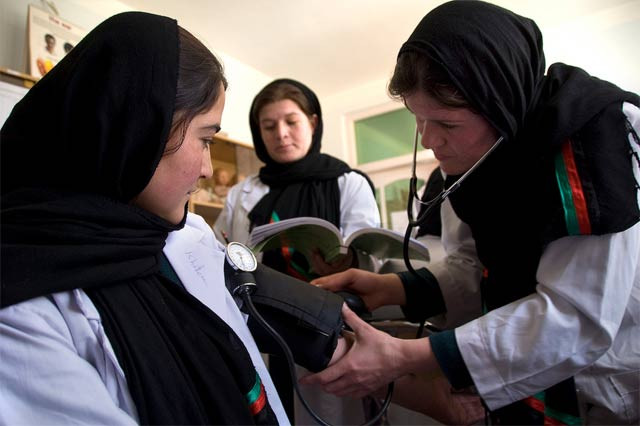Treat 'normal' blood pressure to save lives: study urges
People at high risk include those with a history of heart or artery disease, stroke, diabetes or heart failure

PHOTO: MHIP
Based on an analysis of 123 medical trials involving more than 600,000 people over two decades, the team called for an urgent review of existing treatment guidelines.
High-protein diet lowers blood pressure too
"Our findings clearly show that treating blood pressure to a lower level than currently recommended could greatly reduce the incidence of cardiovascular disease," said study lead author Kazem Rahimi of the University of Oxford. This could "potentially save millions of lives."
Blood pressure is recorded as two numbers, written as a ratio, for example 140/90 mmHg (millimetres of mercury -- the blood pressure unit).
The number on top is the "systolic" pressure inside the arteries when the heart beats, and the other the "diastolic" pressure between beats, when the heart is at rest and refilling with blood.
According to the American Heart Association, a "normal" pressure is less than 120/80, and becomes high from 140/90.
High-protein diet lowers blood pressure too
The study found that every 10 mmHg reduction in systolic blood pressure reduced the risk of heart attack by about a fifth, of stroke and heart failure by about a quarter, and the risk of death from any cause by 13 per cent.
"Importantly, these reductions in disease were similar across a wide range of high risk patients... irrespective of whether their blood pressure was already low (less than 130 mmHg) to begin with," they wrote.
People at high risk include those with a history of heart or artery disease, stroke, diabetes or heart failure.
The researchers urged a revision of blood pressure guidelines, including those of the European Society of Hypertension which recently relaxed its recommended treatment level for high-risk patients from 130 to 140mmHg of systolic pressure.
Cat naps at office can lower blood pressure
"Our results provide strong support for lowering blood pressure to systolic blood pressures less than 130 mmHg," wrote the team.
High blood pressure is the leading cause of heart disease and stroke, said the study authors, affecting more than a billion people worldwide and killing about 9.4 million every year.
The benefits of lowering sustained high pressure are well established, but it has not been clear whether people with "normal" pressure levels would also benefit from treatment.
University of Sheffield cardiologist Tim Chico, who was not involved in the study, stressed that the benefits of treatment for a person with "normal" blood pressure would depend on the individual's other risk factors for heart disease and stroke.
"For example, if you are already at a low risk, reducing this by 20 per cent isn't all that important, and probably isn't either cost-effective or desirable," he said via the Science Media Centre.
"However, if you are at high risk (such as if you already have cardiovascular disease, diabetes or smoke) then a 20 per cent reduction in risk makes a big difference and saves a lot of lives."
Anna Dominiczak, editor of the American Heart Association's journal Hypertension, said she would call for a debate on blood pressure guidelines based on the study findings.



















COMMENTS
Comments are moderated and generally will be posted if they are on-topic and not abusive.
For more information, please see our Comments FAQ